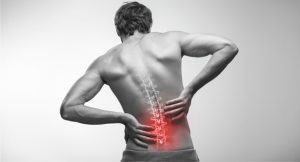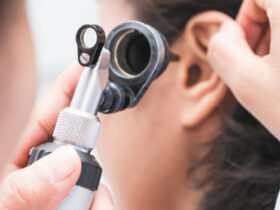By Amanda N. Sacino, MD-PhD . Neurosurgeon and Managing Partner
 Back pain is a widespread ailment affecting millions worldwide. A recent peer-reviewed study published in Lancet Rheumatology found that back pain is the leading cause of disability worldwide and is projected to affect almost 1 billion people by 2050 (1). While it can arise from various factors, certain conditions are more commonly responsible for this discomfort. This article delves into seven prevalent causes: spinal stenosis, spondylolisthesis, herniated disc, synovial cyst, compression fracture, muscle strain, and excessive sitting.
Back pain is a widespread ailment affecting millions worldwide. A recent peer-reviewed study published in Lancet Rheumatology found that back pain is the leading cause of disability worldwide and is projected to affect almost 1 billion people by 2050 (1). While it can arise from various factors, certain conditions are more commonly responsible for this discomfort. This article delves into seven prevalent causes: spinal stenosis, spondylolisthesis, herniated disc, synovial cyst, compression fracture, muscle strain, and excessive sitting.
1. Spinal Stenosis
Spinal stenosis occurs when the spaces within your spine narrow, putting pressure on the nerves traveling through the spine. This condition is most often seen in adults over 50 years old. Symptoms vary depending on the location of the stenosis and can include back pain, numbness, weakness, and cramping or pain in the legs. The narrowing is typically caused by wear-and-tear changes in the spine related to osteoarthritis. Management typically involves non-opioid analgesic medications, physical therapy, targeted epidural steroid injections, and, as a last resort, surgery to create additional space for the spinal cord or nerves.
2. Spondylolisthesis
Spondylolisthesis is a condition where one of the vertebrae slips out of place onto the bone below it. This is often due to a fracture or a defect in the pars interarticularis, part of the vertebra. While it can occur in athletes who engage in sports that put stress on the back, it can also occur as people age and their discs become less spongy. Symptoms can range from mild to severe and include lower back pain, stiffness, muscle tightness, and nerve pain. Treatment options include physical therapy, medications, corticosteroid injections, bracing, and in some cases, surgery.
3. Herniated Disc
A herniated disc, also known as a slipped or ruptured disc, occurs when the soft inner portion of the disc protrudes through a tear in the tougher exterior. This herniation can irritate nearby nerves, resulting in pain, numbness, or weakness in an arm or leg. While a herniated disc can occur anywhere in the spine, it most frequently appears in the lower back. Treatments for a herniated disc range from rest, bracing, and pain relief medications to physical therapy, corticosteroid injections, and, in severe cases, surgery.
4. Synovial Cyst
Synovial cysts are fluid-filled sacs that can develop in the spine because of degeneration. These cysts are commonly found in the lumbar spine and can cause back pain, sciatica, or spinal stenosis. While these cysts are generally benign, they can become problematic if they grow large enough to compress nerve roots. Treatment may involve anti-inflammatory medications, corticosteroid injections, or surgical removal, depending on the severity of symptoms.
5. Compression Fracture
A compression fracture occurs when one of the vertebrae in the spine collapses. This is most commonly due to osteoporosis, especially in older adults, but can also result from injury or trauma. Symptoms include sudden, severe back pain, loss of height, or spinal deformity. Treatment focuses on pain relief, bracing, treating the osteoporosis to prevent further fractures, and in some cases, a surgical procedure like kyphoplasty can help to stabilize the fractured vertebra.
6. Muscle Strain
Muscle strain, though less severe than other causes, is one of the most common causes of back pain. It can occur due to sudden heavy lifting, awkward movements, or chronic overuse, leading to stretched or torn muscles or tendons. Symptoms include pain that worsens with movement, muscle spasms, and decreased range of motion. Treatment typically involves rest, ice or heat application, over-the-counter pain relievers, gentle stretching, and bracing. Most strains heal within a few weeks.
7. Excessive Sitting
In today’s increasingly sedentary lifestyle, excessive sitting has emerged as a significant contributor to back pain. Prolonged sitting can lead to poor posture, increased stress on the back, and muscle imbalances, resulting in discomfort and pain. To mitigate these effects, it’s recommended to take regular breaks to stand and stretch, maintain good posture, and engage in regular exercise.
Conclusion
Back pain can significantly impact daily life, but understanding its common causes is the first step towards effective treatment. While some conditions are more severe and may require medical and surgical intervention, many cases of back pain can be managed with self-care and lifestyle changes including exercise and walking. It’s important to consult a healthcare professional if you experience persistent or severe back pain to determine the underlying cause and appropriate treatment.
References
1. GBD 2021 Low Back Pain Collaborators. Global, regional, and national burden of low back pain, 1990-2020, its attributable risk factors, and projections to 2050: a systematic analysis of the Global Burden of Disease Study 2021. Lancet Rheumatol. 2023;5(6):e316-e329.
About Amanda Sacino, MD, PhD
Dr. Sacino was born and raised on the east coast of Florida. After securing her undergraduate degree at Boston Unversity, she returned to her home state and attended the University of Florida, where she obtained her medical and post-doctorate degrees.
Her PhD work focused on proteinopathies, mainly Parkinsonism. But her mentors recognized her surgical precision skills, and so Dr. Sacino pursued extensive training in cranial, spine, and peripheral nerve surgery at Johns Hopkins Hospital. From there, she completed two spine fellowships at Johns Hopkins Hospital and the Swedish Neuroscience Institute. Her surgical spine training includes experience with degenerative diseases, congenital diseases, deformity, oncology, and trauma.
Dr. Sacino trained under Dr. Nicholas Theodore, the inventor of the Globus ExcelsiusGPS robot. She was present during the first robotic surgery at Johns Hopkins and trained extensively for five years with the robot during both spine and cranial cases.
Dr. Sacino’s high standards and pursuit of quality has led her to become well-respected by her mentors and peers. Her goal is to provide patients with case-specific solutions so they have all the information and options they need to make informed decisions.
239-422-APEX (2739)
3530 Kraft Road, Suite 203 • Naples, FL 34105
www.apexbrainandspine.com








